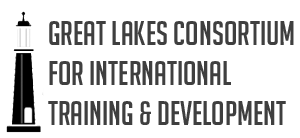The guide provides you with the basic know-how and resources needed to have a greater say in the policies that affect your communities. An initiative of the Office of the Public Advocate’s new Community Organizing and Constituent Services Department, this guide gives individual New Yorkers and community groups a better understanding of how New York City government works, what you can do to make your government more responsive, and how you can help make this a better city. Central to that process are the organizing efforts of people like you.
————————————————————————————————————————————————–
This manual will provide a starting point from which you can learn to identify an issue and begin to organize in order to shift the existing power relations and begin to effect real, tangible change in your community. The concepts presented here are adapted from Organizing for Social Change: Midwest Academy Manual for Activists (2001) by Kim Bobo, Jackie Kendall, and Steve Max. All references here are to this book. Bobo, Kendall, and Max take a Direct Action approach to organizing. This approach differs from other approaches in that is organizing done by the people with the problem, instead of an outside organization fighting on their behalf.
————————————————————————————————————————————————–
 Handbook on Community Organizing
Handbook on Community Organizing
When it was decided to develop this handbook, it was agreed that the concept of a community organizer would be something that may need some explanation. The word “organizer” may conjure up negative images, but those images are not the reality. A community organizer is a person that listens to, and mobilizes, people to make their community a better place. Some people may call this a community builder or a community coordinator. In this section you will learn about the history of community organizing. You will also be introduced to some tools and strategies that can help you organize your community.
————————————————————————————————————————————————–
 Community Organzing as Practiced in the United States- A Description With Examples By Rev. Paul Cromwel
Community Organzing as Practiced in the United States- A Description With Examples By Rev. Paul Cromwel
Community organizing as practiced in the United States has as its roots the work of Saul Alinsky (1909 -1972). Alinsky’s work, begun in Chicago and then moved to other American cities, can most simply be described as the transferring of concepts and strategies used in the American labor movement for greater worker justice, to poor and ethnically diverse large urban neighborhoods in order to improve city services and the quality of life in these residential neighborhoods.
————————————————————————————————————————————————–
 Community Organizing: People Power from the Grassroot
Community Organizing: People Power from the Grassroot
The present paper written by Dave Beckwith is talking about the Four Strategies, What is Community Organizing, The Principles of Community Organizing, The Ten Rules of Community Organizing and Defining an Action.
————————————————————————————————————————————————–
A series of papers aiming to capture and document growing knowledge around youth organizing, and address key issues and questions commonly posed by funders and practitioners about the work and field overall. You’ll find a full list and summary descriptions of the Occasional Paper Series on the link above.
————————————————————————————————————————————————–
The Toolkit is a set of resources that supports face-to-face training for residents and community leaders. The computer-based component (the “Organizing Game”) is used to introduce concepts, prompt discussion, and allow residents to practice skills in a safe, non-threatening environment. The initial focus of the Toolkit is teaching Doorknocking, an organizing technique that’s particularly effective in moving issues within a local community.
————————————————————————————————————————————————–
 Take Action – Create Change, A Community Organizing Toolkit
Take Action – Create Change, A Community Organizing Toolkit
The toolkit represents an assemblage of exercises and tips created by LCAT, as well as, a range of advocacy sources and are divided into six sections from topics on “Defining an Issue” to “Mobilizing the People”. Through the use of this toolkit you can begin to work successfully in engaging communities around a common goal. Historically disadvantaged communities have been under-represented or misrepresented for too long. Our communities have always held the power to rise up and take action for their rights. This toolkit offers ways to help communities recognize this power, use it, and bring about social change.
————————————————————————————————————————————————–
A web site designed to support people and groups who are working for inclusion, racial equity and social justice. The site includes ideas, strategies and tips, as well as a clearinghouse of resources and links from many sources. Racial Equity Tools is organized into four main areas. The first page of each section has an overview of the resources and tools in that section. Several also have questions or suggestions to help you think about what needs to happen at this point in a change process. At the end of each section are Tip sheets. Tip sheets provide more detail about one topic, often a particular part of a change process.


